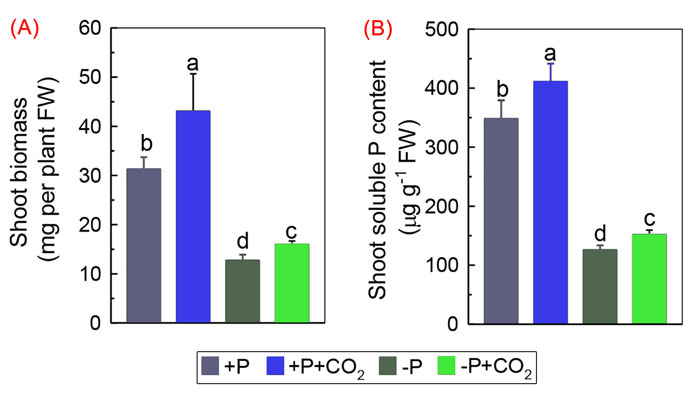| Tweet | Follow @co2science |
Paper Reviewed
Zhu, X.F., Zhang, X.L., Dong, X.Y. and Shen, R.F. 2019. Carbon dioxide improves phosphorus nutrition by facilitating the remobilization of phosphorus from the shoot cell wall in rice (Oryza sativa). Frontiers in Plant Science 10: 665, doi: 10.3389/fpls.2019.00665.
Phosphorus (P) deficiency is a major factor limiting crop production and yield. Consequently farmers add P fertilizers (i.e., inorganic phosphate, the main form of P taken up by plants) to their fields in an attempt to overcome such deficiency and obtain greater crop yields. Consequently, breeding crops with higher yields and lower P fertilization requirements is gaining scientific attention so as to help ensure sustainable agriculture and food security.
The latest study to broach this topic comes from Zhu et al. (2019). Publishing their work in the journal Frontiers in Plant Science, the team of four Chinese researchers examined the impact of P deficiency under elevated CO2 conditions on rice seedlings grown for seven days in either a P-sufficient (+P) or P-deficient (-P) growth medium.
Among other things reported by the authors, they found that "P deficiency reduced the growth of roots and shoots; however, shoot, [but not root,] growth was improved under elevated CO2, independent of the P status (Figure 1a). They also note that elevated CO2 stimulated the reutilization of shoot cell wall P, indicated by the higher shoot soluble P content in the elevated CO2 treatments seen in Figure 1b, which helped to further stimulate growth.
With respect to exactly how elevated CO2 facilitated the reutilization of P in rice, the authors say it is "mediated by a cell wall P-based P remobilization mechanism involving an increase of pectin content and pectin methylesterase activity," adding that "ethylene may act downstream of CO2 to control these processes." Fortunately, the end result of these several processes is an "improvement of P nutrition in rice by elevated CO2," as "any approaches to improve the reutilization of the P from the cell wall may promote plant growth under P-deficient conditions." And that improvement should help boots food security and also reduce the amount of P-based fertilizer applied on P-deficient farmlands, which should help reduce environmental damage from eutrophication.

Figure 1. Effects of elevated CO2 on the biomass of rice shoots (Panel A) and the soluble P content in rice shoots (Panel B) grown under +P and -P conditions for 1 week. Data are means ± SD (n = 4). Columns with different letters are significantly different at p < 0.05. Source: Adapted from Zhu et al. (2019).




